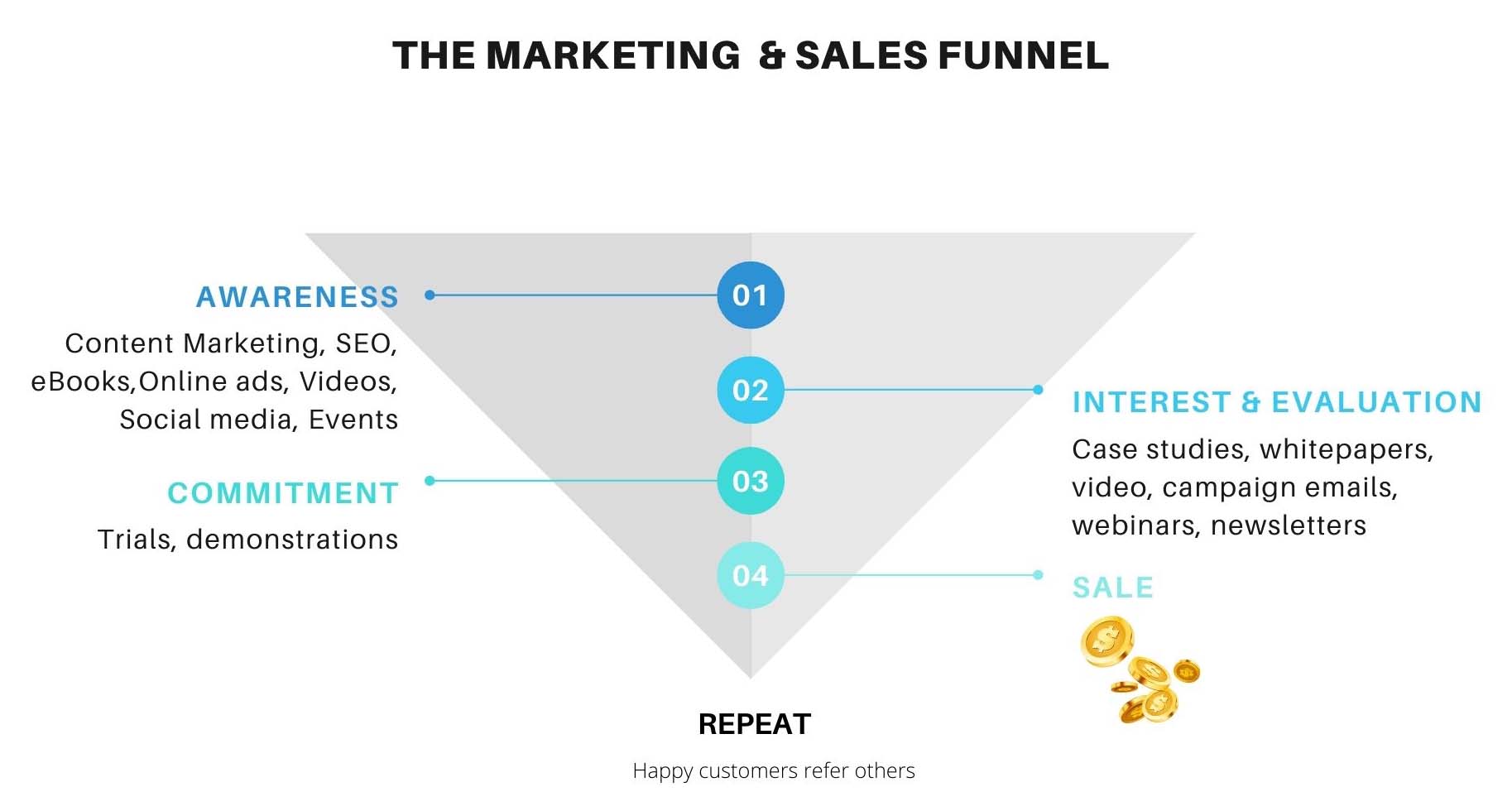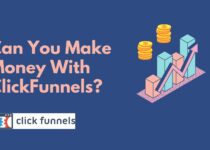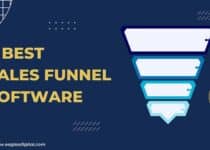How to Create a Powerful Marketing Funnel in 2025

If you’re looking to create a powerful marketing funnel – you’ve come to the right place.
Marketing funnels are essential in guiding potential customers from awareness to conversion, providing a structured approach to nurture leads and build loyalty.
After spending over a decade helping businesses build their funnels and seeing the digital landscape evolve dramatically, I’ve learned that a well-crafted marketing funnel is the backbone of any successful online business.
In this guide, I’ll cover how to build a successful marketing funnel this year, from setting up and customizing each stage, to developing your content strategy, optimizing for conversions, and more.
What is a Marketing Funnel?
A marketing funnel is like your business’s personal GPS. It guides potential customers from their first “hello” to becoming loyal fans.
Imagine it as a strategic pathway that turns strangers into passionate brand advocates. By carefully crafting stages of awareness, engagement, consideration, conversion, and retention, you can create meaningful touchpoints that educate, nurture, and build trust.
After implementing hundreds of funnels across different industries, I’ve learned that it’s not just about moving people from top to bottom. It’s about building genuine connections and creating a memorable customer experience.

The most successful funnels don’t just sell – they solve problems, answer questions, and create genuine connections that turn casual browsers into committed customers.
Step by Step: How to Create a Marketing Funnel
Here are the steps to create a robust funnel that aligns with your business goals.
1. Awareness Stage – Capturing Attention with Engaging Content
The awareness stage is where most businesses throw money away because they’re targeting everyone instead of someone. Here, the goal is to reach a broad audience, catch their attention, and introduce them to your brand.
After years of running marketing campaigns, I’ve learned that “how-to” videos and informative social posts get 3x more engagement than promotional content.
Example:
A local fitness studio can create a series of engaging workout tip videos that address common exercise mistakes people make at home or in the gym.
These videos naturally attract individuals looking to improve their workouts, leading them to discover the studio’s services as the content spreads organically on Instagram and TikTok.
This approach works so effectively because it addresses a problem right when people are searching for solutions.
2. Interest Stage – Nurturing Curiosity
Once you get the audience’s attention, you will now need to educate them about your product or service.
This is where I see most businesses make a mistake. They jump straight into selling instead of building genuine interest. Here’s my proven approach:
Focus on creating content that showcases your expertise without being pushy. One of my most successful strategies has been developing free tools or resources that provide immediate value.
Example:
The fitness studio can offer a free “At-Home Workout Guide” on its website to help people get gym-quality results at home. Then, users will need to enter their email to download the guide, helping the studio grow their email list.
This guide should include custom workouts, tips, and video links, encouraging users to connect with the studio’s resources and brand.
3. Consideration Stage – Building Trust with Product Insights
Focus on comparison content that helps potential customers make informed decisions. Here are some key tactics for your success:
- Detailed product comparisons
- Industry analysis reports
- Behind-the-scenes looks at your process
- Customer success stories with specific metrics
Example:
In this stage, the fitness studio can email potential clients with success stories, testimonials, and a virtual tour. They can also offer a free trial to show off their equipment, trainers, and personalized approach.
These presentations help potential clients to have a visual on the benefits of in-person training, encouraging them to sign up.
4. Conversion Stage – Driving the Final Sale
The conversion stage is where leads turn into paying customers. Here, you need to eliminate any friction in the buying process and provide clear incentives to encourage purchases.
I once reduced a client’s checkout process from five steps to three and saw an immediate 25% increase in conversions.
Here are some tips to consider for this stage:
- Clear, compelling calls to action
- Streamlined checkout process
- Multiple payment options
- Transparent pricing with no hidden fees
Example:
As the trial period nears its end, the studio should send a targeted offer to trial participants with a limited-time discount on membership or a special rate on personal training packages. It is also a good idea to include a clear call-to-action to “Join Now” or “Book a Session Today,” in the email to simplify the sign-up process.
This urgent offer will encourage trial users who’ve seen the studio’s value to make a commitment and join as paying members.
5. Retention Stage – Building Loyalty with Ongoing Engagement
Once a customer buys your product, the journey doesn’t end. Remember, it’s more cost-effective to retain customers than to acquire new ones. This stage focuses on nurturing customer relationships to encourage repeat purchases and brand advocacy.
A successful retention strategy includes:
- Regular check-ins with customers
- Exclusive content for existing customers
- Loyalty programs that actually provide value
- Educational resources to help customers succeed
- Community building initiatives
Example:
After becoming members, clients get exclusive monthly workouts and nutrition tips by email. They can also join a private Facebook group to share progress, ask questions, and connect with trainers.
The studio will keep members engaged with special offers, like discounted training or early access to new classes. This community-focused approach builds loyalty and turns members into lifelong fans.
The Benefits of a Marketing Funnel: Why Every Business Needs One
Here are the key benefits of implementing a marketing funnel for your business:
1. Structured Customer Journey
A marketing funnel is one of the most structured marketing strategies. It focuses on attracting customers through valuable content and experiences.
A successful marketing funnel feels natural to the customer while providing clear pathways for progression. It’s like a good conversation – it flows naturally but has purpose and direction.
The key is to make each transition feel like a logical next step rather than a forced move.
The most interesting part is that you can strategically tailor your key message to meet the needs of your customers at every point in their journey.
This clarity not only helps your business stay organized but also allows customers to feel guided and supported, making them more likely to take the next step.
2. Increased Conversions:
A well-structured marketing funnel delivers the right message at the right time, increasing conversion rates. It also streamlines the customer journey, making it easier for potential customers to take action and ultimately boost conversions.
Through my years of testing and optimization, I’ve found that the most successful funnels don’t just push for the sale – they educate, engage, and empower prospects to make confident buying decisions.
When you focus on delivering value at each stage of the funnel, you’ll see your conversion rates increase naturally.
3. Better Data-Driven Decision Making
Marketing funnels offer valuable insights into customer behaviour, which is precious for the success of your marketing strategy. It allows you to track key metrics and measure the effectiveness of your marketing campaigns.
What I love most about funnel analytics is the ability to test and validate assumptions. Instead of guessing what will work, you can run controlled tests and let the data guide your decisions.
It’s crucial to continuously optimize your funnel based on what the data tells you. That’s how you build a truly data-driven marketing strategy that delivers consistent results.
4. Increased Sales and Revenue
A well-designed funnel helps you guide prospects through a value-rich journey that naturally leads to sales.
Focus on providing genuine value at each stage, and the revenue will follow.
5. Enhanced Customer Retention and Loyalty
Most people focus on new sales, but I’ve found that retention-focused funnels can dramatically increase recurring revenue.
It’s important to deliver value and build genuine relationships with your customers consistently. You need to make each interaction meaningful.
Remember, a marketing funnel doesn’t just attract new customers; it nurtures relationships with existing ones. That’s how you build a business with a loyal customer base that grows stronger over time.
FAQs About Marketing Funnels
How long does it take to see results from a new marketing funnel?
The time it takes to see results from a new marketing funnel can vary quite a bit depending on several key factors. Industry, audience size, the complexity of the funnel, and the marketing strategies employed all play a role in how quickly your funnel grows.
In my experience, you can start seeing initial results within 2-4 weeks, but it typically takes 3-6 months to optimize a funnel for peak performance.
Be patient, but proactive. Monitor your funnel and make adjustments as needed.
Should I focus on organic or paid traffic for my funnel?
Based on my testing, a hybrid approach works best – start with paid traffic to gather data quickly, then scale with organic traffic through content and SEO, so you have a sustainable source of traffic for the future.
This way, you get the best of both worlds: immediate feedback and long-term growth potential.
How much does it cost to build a marketing funnel?
Depending on the complexity of the marketing funnel, whether you need advanced automation, personalized experiences, or integration with other tools, the costs can vary widely.
A basic funnel can be created for under $100/month using free or low-cost platforms like MailChimp, or Systeme.io. However, complex funnels with custom features can cost over $5,000/month.
Most small to medium-sized businesses tend to fall somewhere in the middle, spending anywhere from $300 to $1,000 per month on their marketing funnel infrastructure and ongoing optimization.
The key is to start simple and gradually reinvest your profits into funnel improvements over time.
Final Thoughts
Creating a powerful marketing funnel isn’t about following a rigid template – it’s about understanding your audience and creating a journey that resonates with them.
The most successful funnels I’ve built have all had one thing in common: they prioritize providing genuine value over making quick sales.
Remember, your funnel is never truly “finished”. It’s a living system that needs regular attention and optimization. Keep testing, keep measuring, and most importantly, keep listening to your audience.
They’ll tell you exactly what they need – you just have to pay attention to the signals. Follow the tips and hacks mentioned to create a powerful marketing strategy that drives results.
If you’re interested in learning more about funnels and related tools, check out these articles:


